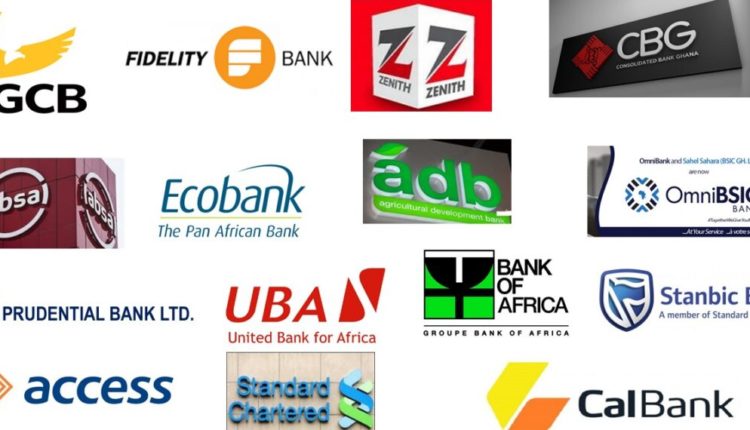Ghanaian banks continue to battle with non-performing loans (NPL), within the sector increment from 15.5 percent in August 2020 to 17.3 percent in August 2021, according to latest data from the Bank of Ghana (BOG).
Despite total deposits to the banks experiencing an increase to 21.8% as of August, from 20.5% recorded in the same period last year, bank loans to businesses declined from 15.6% in August 2020 to 8.7% in the same period this year.
The banks have rather found a ‘safe haven’ in investing in government’s debt securities, as reports from the BOG indicate that, the banking sector holds in its possession GH¢ 86.5 billion (50%) out of total government domestic debt of GH¢ 171.1 billion as of May 2021.
Banks’ lending
Considering some NPLs of banks, the Ghana Commercial Bank for instance, experienced a rise in its NPLs to 20.7% as of June 2021, compared with 7.8% recorded in June last year.
Fidelity Bank Ghana also saw its NPLs rise to 8.34% as of June 2021 as compared to the 5.81% it recoded in June last year.
Other banks such as Cal Bank and Societe Generale Ghana experienced an increase in their non-performing loans to 13.8% and 7.72% as of June 2021 respectively, from 10.8% and 5.85% recorded in the same period last year respectively.
However, banks like Access Bank, experienced an abrupt decline in its non-performing loans from 27.30% in June 2020 to 15.01% as of June 2021.
Also, Zenith Bank, saw its non-performing loans decrease from 9.24% recorded as of June last year to 6.88% in June 2021.
Similarly, Standard Chartered Bank witnessed its non-performing loans decline to 23.16% as of June 2021 from 24.19% recorded in the same period last year.
An outlook for non-performing loans
According to the International Monetary Fund (IMF), the high levels of NPLs within SSA, can be explained by factors including but not limited to “government arrears, creating debt repayment difficulties for domestic suppliers, poor credit risk management practices and a legacy of loan problems that remains unsolved or are written off as bad debt partly because of weak legal systems”.
The IMF by conducting research on banking crisis since 1990, revealed that the typical NPL trajectory has a mean time ratio of 3.3 years from the start of the crisis to the peak of NPLs.
Meanwhile, the global crisis has the potential to impact NPLs differently, as there has been continuous support by international organization and governments to alleviate the crisis.
These support mechanisms, Gonzalo Gasos, a Senior Director at Prudential Policy and Supervision at European Banking Federation revealed, could delay “the NPL growth at the beginning of the crisis, subsequently ‘bursting’ a steep increase in a short period and reducing the overall level at the peak”.
Also, in recent research, the IMF disclosed that “NPL trends are highly correlated with macroeconomic conditions. If history repeats itself, the crisis experienced by SSA countries should lead to a large deterioration of loan portfolios, once regulatory forbearance and other exceptional support measures expire”.
Additionally, the 2020 economic growth collapse, could result in an increase in the mean NPL ratio of the SSA region, by up to one-third in the medium term, the IMF disclosed.
Non-performing loans in view of Covid-19
Gonzalo Gasos disclosed that, the current global crisis is different from the previous crises which were either wholly or partly influenced by the banking sector.
“At least, there are fundamental differences between the current crisis and others, regarding the causes and the banking sector’s degree of preparation.
“Banks were part of the problem in previous crisis, notably in the financial crisis of 2008, but indirectly in the real-estate bubble of the early ‘90s, and the emerging-markets shock of the same decade. But this time around, banks are part of the solution to the COVID-19 crisis” he said.


Comments are closed.